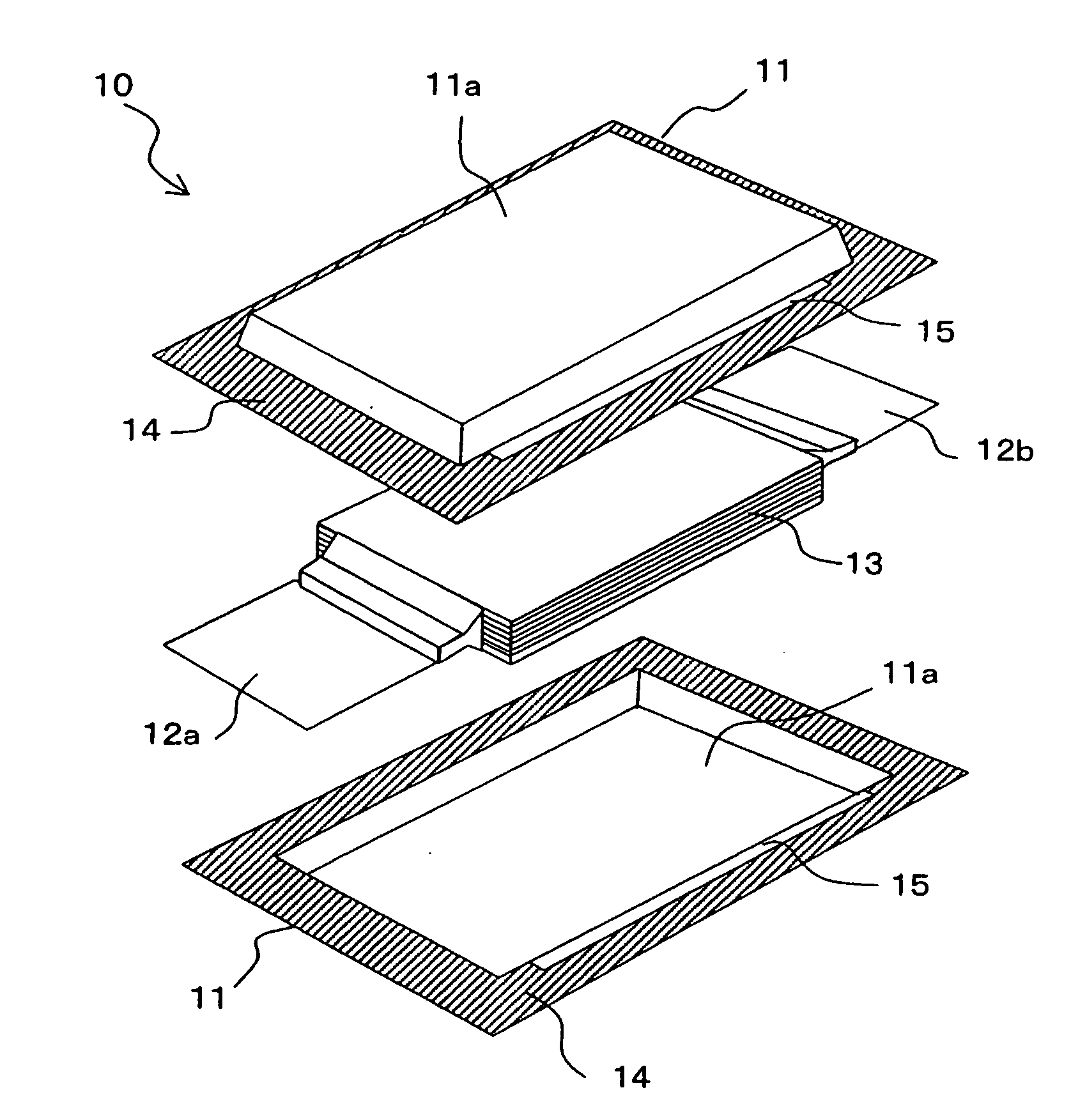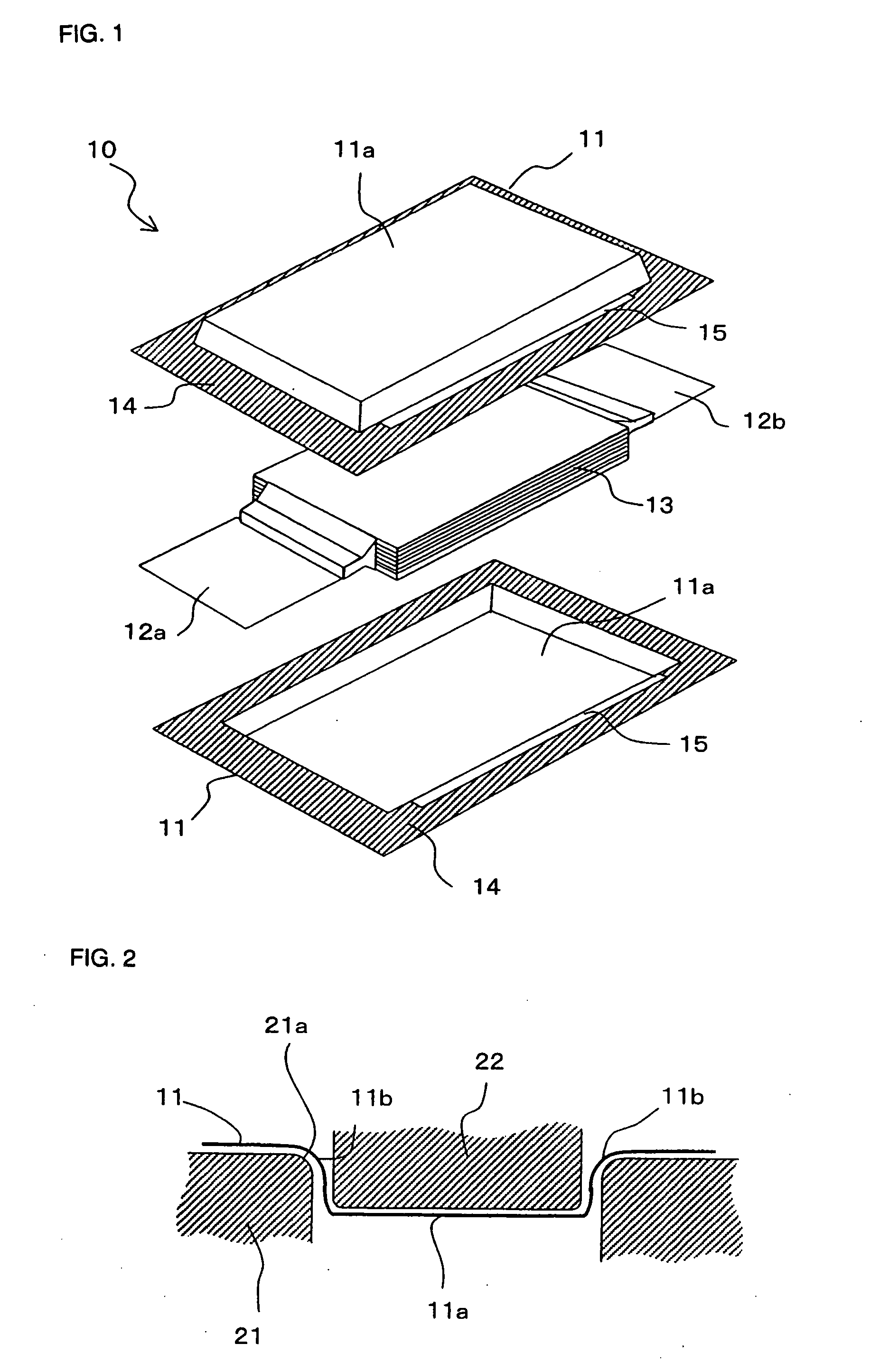Film-packaged electric device and its manufacturing method
a technology of electric devices and films, applied in the direction of cell components, final product manufacturing, sustainable manufacturing/processing, etc., can solve the problems of unconventional knowledge, unresolved problems, and depth of drawing, and avoid the effect of affecting the thermal sealing
- Summary
- Abstract
- Description
- Claims
- Application Information
AI Technical Summary
Benefits of technology
Problems solved by technology
Method used
Image
Examples
example 1
[0064] A plurality of positive poles and a plurality of negative poles, made by coating an electrode material on both surfaces of metal foils, were alternately stacked through separators. An aluminum foil was used for the metal foil for the positive poles. A copper foil was used for the metal foil for the negative poles. A micro-porous film made of polyethylene of 30 μm thick was used as the separators. The separators, which are rectangular, was made to have a size of 75 mm wide and 130 mm deep, which was larger than the size of the positive pole by 2 mm both in length and width, and was substantially the same size as the positive pole. The outermost pole was chosen to be the negative pole, and the separator was disposed outside this negative pole as well. Specifically, the order is separator / negative pole / separator / positive pole / separator / . . . / negative pole / separator. The thickness of the laminate made up of the positive poles, negative poles, and separators was chosen to be 10 ...
example 2
[0072] A film covered battery was fabricated in a similar manner to Example 1 except that a cell element was spaced apart by 3 mm from the thermal sealing head when two longer sides were thermally sealed.
[0073] In this example, a close contact zone was also formed between a thermally sealed area of the two longer sides and the cell element in the fabricated film covered battery, as is the case with Example 1. The width of the close contact zone ranged from 1.5 to 2.5 mm. Also, the two longer sides curved in a similar manner to Example 1, where a central portion, having the largest amount of curving, indented by approximately 1 mm inwardly from both ends, and a close contact zone was also formed in width of approximately 1.5 mm in the central portion.
[0074] When the film covered battery was disassembled to observe the thermally sealed area of the longer sides, a flash of resin was found approximately 0.5 mm at the root of the thermally sealed area in this example, as is the case wi...
PUM
| Property | Measurement | Unit |
|---|---|---|
| width | aaaaa | aaaaa |
| thickness | aaaaa | aaaaa |
| thickness | aaaaa | aaaaa |
Abstract
Description
Claims
Application Information
 Login to View More
Login to View More - R&D
- Intellectual Property
- Life Sciences
- Materials
- Tech Scout
- Unparalleled Data Quality
- Higher Quality Content
- 60% Fewer Hallucinations
Browse by: Latest US Patents, China's latest patents, Technical Efficacy Thesaurus, Application Domain, Technology Topic, Popular Technical Reports.
© 2025 PatSnap. All rights reserved.Legal|Privacy policy|Modern Slavery Act Transparency Statement|Sitemap|About US| Contact US: help@patsnap.com



